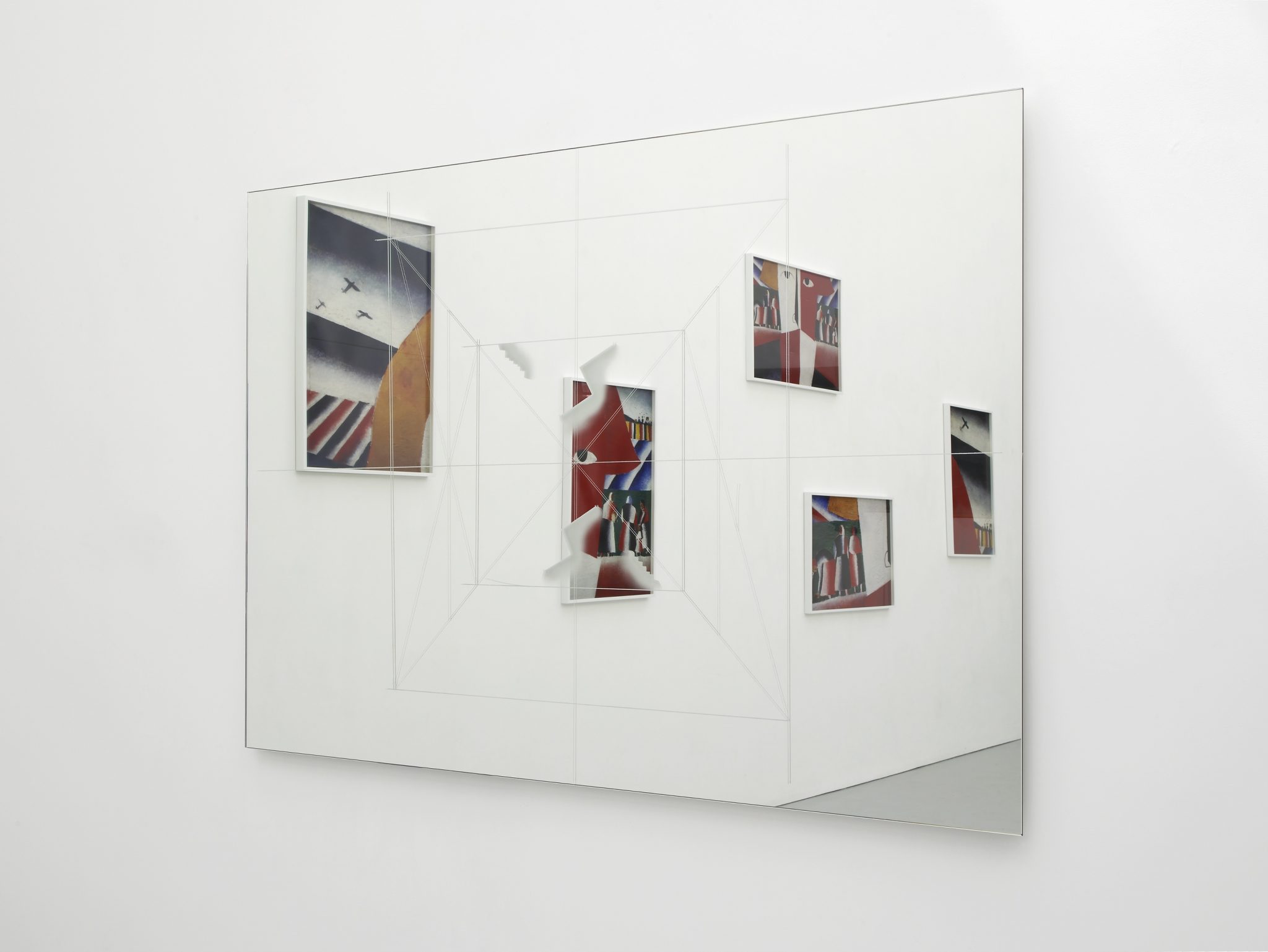October 2014 135 Eustachy Kossakowski (1925–2001) and Goshka Macuga are the two title artists, but this exhibition includes the work of a third, Russian Suprematist Kazimir Malevich (1879–1935), whose current touring retrospective, in its third and final incarnation at Tate Modern, provides the perfect tie-in. In 1989 press photographer and artist Kossakowski documented the first Malevich retrospective at the Stedelijk in Amsterdam, creating in the process a series of photographs, shown here, that concentrate on cropped details of selected Malevich paintings. Kossakowski’s careful framing of sections of the paintings not only shifts the focus of the images and alters perceptions of scale but also highlights the striking gradated colour pairings and stylised geometric forms that make up the compositions of these works. The process accentuates Malevich’s highly individual combination of geometric abstraction and figuration, especially when used, as in these examples, to depict traditional subjects: toiling Russian peasants – Girls in the Field (1928–9), Head of a Peasant (1928–9); landscape – Landscape with Five Houses (1928–9); and portraiture – Portrait of Ivan Vasilevich (1913).
To these are added Macuga’s own reflections on Malevich (in more ways than one), in the form of a pair of mirrors, dated ‘(1922), 2003’, which are sandblasted with designs based on Malevich’s geometric diagrams. Adding another dimension to the way Kossakowski’s photographs are viewed, the mirrors’ etched reflections visually overlay the diagrams onto the fragmented views of the exhibition seen within them. The visual effect this creates is one aspect of the exhibition, but equally significant are nuances in the backstories to these artists. Kossakowski often documented other artists’ work. His Malevich photographs, part of an archive comprising 14,000 images, were first exhibited in 2010 in Warsaw’s Polonia Palace Hotel, former home of the Polish Arts Club but more significantly also the location of Malevich’s first exhibition outside of Russia, in 1927. Malevich was also aware of the effects of methods of exhibition display, launching Suprematism in the 1915 exhibition titled The Last Exhibition of Futurist Painting 0.10 (Zero-Ten) with a carefully arranged display of works that placed his famous Black Square (1915) painting in an upper corner of the room, the position in which an icon would traditionally be hung.
Kossakowski is the name on the majority of the works and Malevich the strongest visual presence in the gallery, but it’s the least visible Macuga who has orchestrated the display, collapsing definitions of authorship, representation and documentation to bring these multiple viewpoints and layers together. These are all recurring elements in Macuga’s practice – archival research, methods of museum and exhibition display, creating ‘collaborations’ between artists across geographies and time – and as an exhibition this may be one of the more minimal examples, but the lines of connection revealed that are triangulating these particular artists are no less layered or complex, maybe even mirroring the geometric lines in the formulas and ratios of Malevich himself.
This article originally appeared in the October 2014 issue
